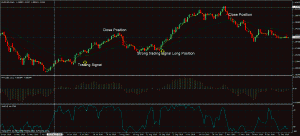Continuing with simplicity in concepts and strategies, we will present some simple trading methods. These are certain methods for long-term trends following.
As a historical note about this type of methods, we can say that they have been there since “the origin of time” and, if they have not disappeared is for something and is that simple and effective trading methods endure in time unlike others, much more Sophisticated and complicated, that stop working and disappear.
Trend breakout and trend following methods
- Breakout: volatility channel breakout systems. It is the generic concept.
- ATR Channel Breakdown (Average True Range Channel): is a breakout system with the ATR as a measure for the volatility channel, like the one we saw in a previous post of this blog.
- Bollinger bands breakout: it is volatility channel breakout system that uses the standard deviation as a measure of volatility.
- Donchian Trend: it is a breakout system with trend filter.
- Dual moving average: a trend following method using 2 moving averages of different duration. This is one of the most common trading systems that still remains in the market since it opens buy and sell trades when one moving average crosses the other, either upward or downward.
- Triple moving average: a trend following method that uses 3 moving averages of different duration. It basically works the same way as the previous method but with the slower moving average as a trend filter.
Backtesting and simple trading methods
Backtesting has many followers and detractors: The concept of backtesting is simply to test our systems with historical data. As in any situation in life, when we want to design a system for anything, we must first have knowledge of what we are going to study and then create the system that suits this objective. In our case, we must have data from the market in order to develop our system. It does not mean that this system works only on the audited data nor that the market state is repeated again and again for our system to work. Rather it is about understanding how market events can happen and designing our system so that it is able to detect and react to these changes.
There are many detractors of backtesting tests who argue that it is unlikely that the market will repeat the same situations in the future but, on the other hand, these are the only data available for the market study . As the poet Lord Byron once said in one of his most famous phrases: “The best prophet of the future is the past.” It is very important to understand that the past does not predict the future but it helps us to be prepared.
Once these methods and the concept of backtesting are known, we are prepared to address the following post on the backtesting of the methods listed here. We will take a time slot from a particular market and we will look at these methods in more detail.







